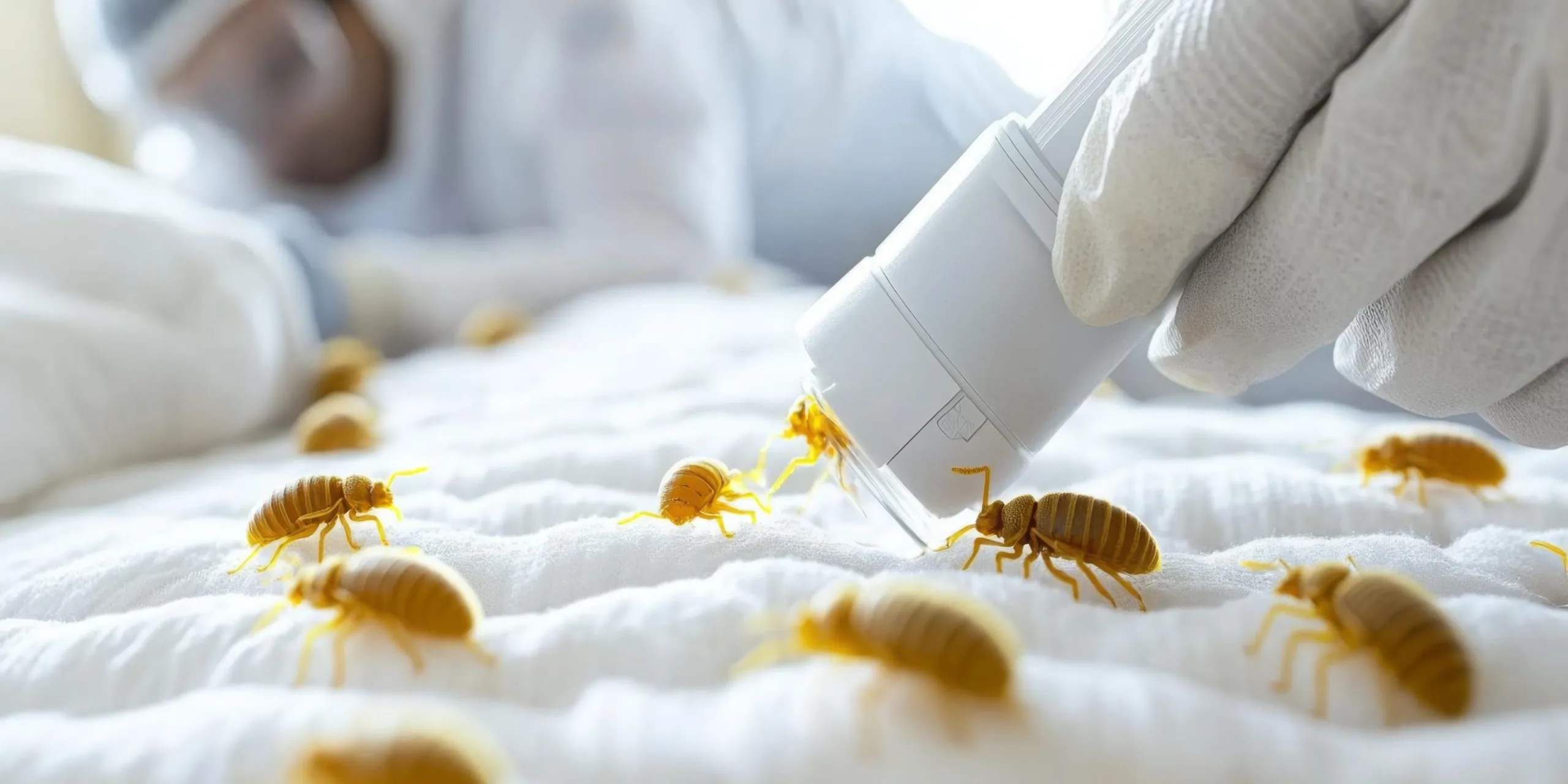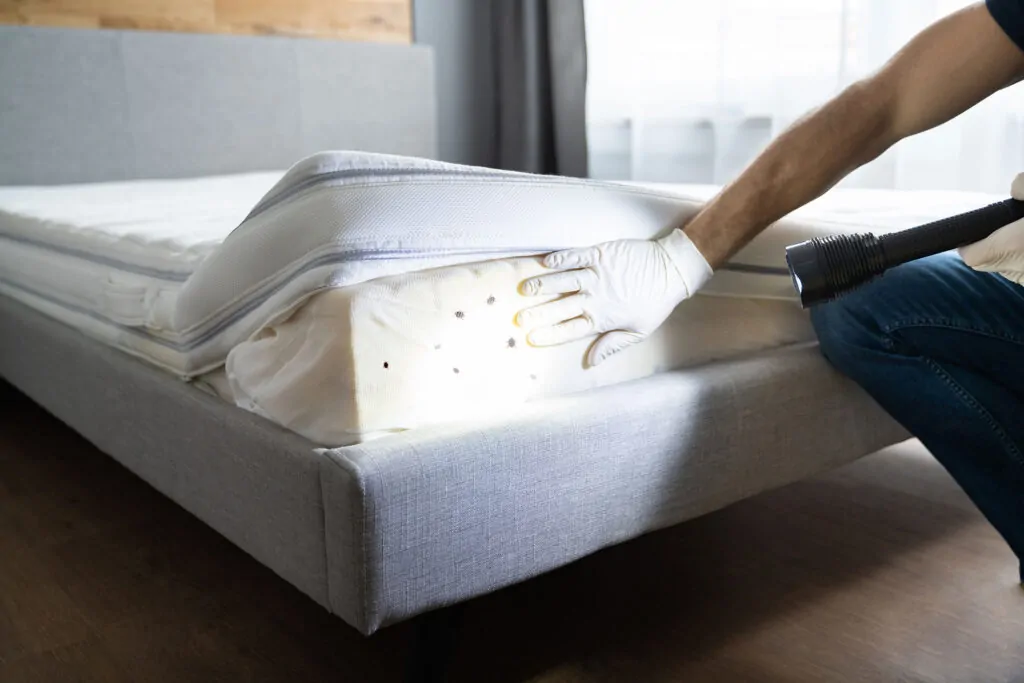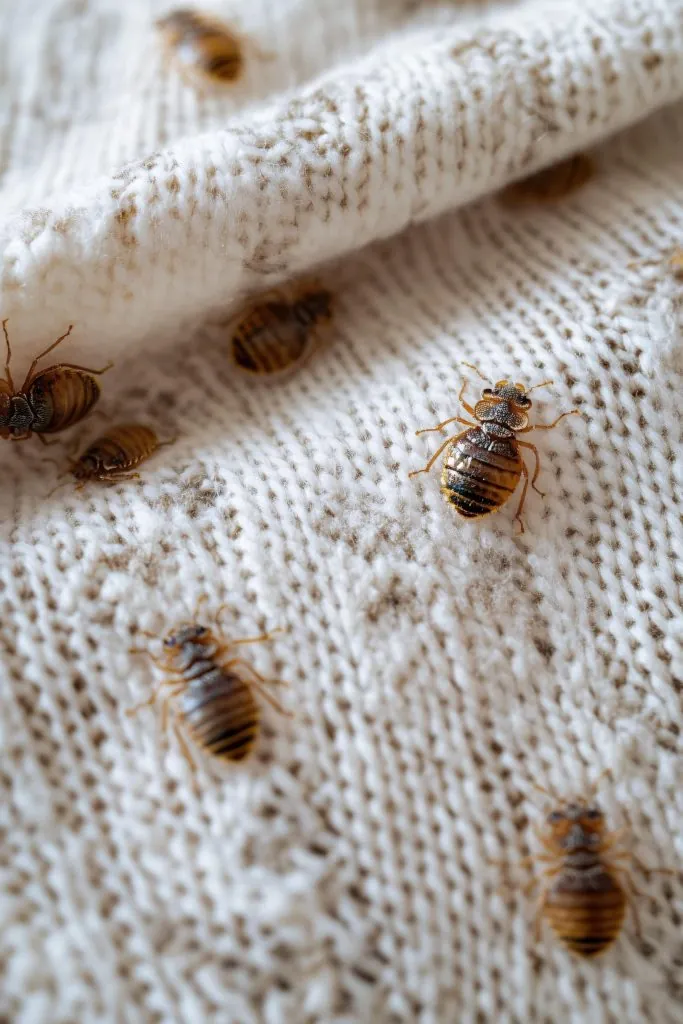How to Disinfect a Mattress from Bed Bugs
Knowing how to disinfect a mattress from bed bugs is essential to keeping your bed clean and pest-free. These tiny, reddish-brown insects hide in mattresses, bed frames, and furniture, coming out at night to feed on your blood. Because they’re so small and good at hiding, you might not notice them until the infestation grows. Properly cleaning and disinfecting your mattress helps eliminate bed bugs and prevent them from spreading so you can sleep peacefully.
Cleaning your mattress is essential to eliminate bed bugs and prevent them from spreading. They multiply fast, so if you don’t act quickly, they can take over your home. Keeping your bed clean and protected helps you sleep peacefully without worrying about these unwanted pests.
Signs of a Bed Bug Infestation
Before you disinfect a mattress from bed bugs, you need to confirm their presence. These tiny pests are experts at hiding, so knowing what signs to look for can help you catch an infestation early. Here are some manifestations that confirm when bed bugs have already invaded your bed:
Visible bugs
Bed bugs are tiny, reddish-brown insects about the size of an apple seed. They often hide in mattress seams, bed frames, and small cracks in furniture. If you spot one, there’s a good chance more are creeping around nearby.
Small black spots
These are bed bug droppings, which look like tiny ink stains on sheets, mattresses, or walls. They are usually found near bed bug hiding spots, such as along mattress seams or behind headboards. If you see these stains, it’s a strong sign of an active infestation.
Bloodstains on sheets
After feeding, bed bugs can get crushed when you move in your sleep, leaving behind small, rust-colored blood spots on your sheets or pillowcases. These stains may also appear on pajamas or nearby furniture. If you regularly notice unexplained blood spots, bed bugs might be the cause.
Itchy bites
Bed bug bites are red and swollen and often appear in clusters or straight lines on exposed skin. They can be extremely itchy and sometimes cause allergic reactions or irritation. If you wake up with new bites that weren’t there before, bed bugs could be to blame.
Musty odor
In large infestations, bed bugs release a musty, unpleasant smell similar to damp towels or moldy clothes. This odor comes from their scent glands and is strongest in heavily infested areas. If your bedroom has an unusual, lingering smell, bed bugs could be the cause.
Immediate Steps to Disinfect a Mattress from Bed Bugs
As soon as you detect bed bugs, act fast to stop them from spreading. The first step to Disinfect a Mattress from Bed Bugs is to remove all bedding, including sheets, blankets, and pillowcases, and seal them in a plastic bag to contain the infestation. Taking immediate action helps reduce the number of bed bugs in your space and makes further treatment more effective. Follow these essential steps to start eliminating bed bugs and reclaim your bed:
Strip Your Bed
Remove all sheets, blankets, pillowcases, and mattress covers right away. Please place them in a sealed plastic bag to prevent bed bugs from escaping or spreading to other rooms. Keeping infested items contained helps control the outbreak while you prepare for cleaning.
Wash and Dry on High Heat
Wash all bedding in hot water at at least 120°F to kill bed bugs and their eggs. After washing, dry everything on the highest heat setting for at least 30 minutes to ensure that no bugs survive. High heat is one of the most effective ways to eliminate bed bugs from fabrics.
Vacuum Thoroughly
Use a vacuum with a HEPA filter to clean your mattress, bed frame, and the area around your bed. Focus on seams, corners, and cracks where bed bugs like to hide. After vacuuming, immediately empty the vacuum outside into a sealed bag to prevent any bugs from escaping.
Declutter Bed Area
Declutter the area around your bed, particularly items stored underneath, as bed bugs thrive in dark, undisturbed spaces. Keep clothing, books, and other loose items away from your sleeping area to minimize hiding spots. Maintaining a clean, open space makes detection and elimination easier.
Seal Cracks and Gaps
Inspect your bed frame, walls, and nearby furniture for any gaps or cracks where bed bugs might be hiding. Use a sealant to close off these spaces, making it harder for bugs to find new hiding spots. Sealing cracks is a long-term prevention step that helps stop future infestations.
Use Bed Bug Interceptors
Place special bed bug interceptor traps under each bed leg to catch any bugs trying to climb up. These traps help you monitor the infestation and prevent bed bugs from reaching your mattress. If you see bugs in the interceptors, it’s a clear sign that further treatment is needed.
Disinfecting a Mattress from Bed Bugs Through Deep Cleaning
Once you’ve taken immediate action, the next step is to deep-clean your mattress to eliminate any remaining bed bugs, eggs, and debris. To thoroughly disinfect a mattress from bed bugs, deep clean it using effective methods. A thorough cleaning ensures they don’t come back and helps you sleep peacefully again. Follow these steps for an effective deep clean:
Vacuum thoroughly.
Use a HEPA-filter vacuum to suck up bed bugs, eggs, and debris from the entire mattress. Pay extra attention to seams, edges, and tufted areas where they like to hide. After vacuuming, immediately empty the vacuum bag or canister outside to prevent bugs from escaping back into your home.
Steam clean.
High heat is one of the most effective ways to kill bed bugs, so use a steam cleaner with at least 200°F (93°C) temperature. Slowly move the steamer across all mattress surfaces, allowing the heat to penetrate deeply. Be sure to steam cracks, seams, and folds where bed bugs usually hide.
Apply bed bug spray.
Use an EPA-approved bed bug spray and lightly mist your mattress, especially around seams and gaps. Avoid soaking the mattress, as too much moisture can lead to mold. Let the spray dry thoroughly before making your bed again.
Exposure to sunlight.
Bed bugs cannot survive extreme heat, so placing your mattress in direct sunlight for several hours can help eliminate them. Rotate the mattress occasionally to ensure all areas are exposed. If outdoor sunlight isn’t an option, use a heated room to achieve similar results.
Use a bedbug-proof encasement.
Once your mattress is clean and dry, cover it with a zippered, bedbug-proof encasement. This prevents any remaining bed bugs from escaping and stops new ones from getting inside. Keep the encasement on for at least a year to ensure any trapped bugs die off.
How to Protect Your Mattress from Future Bed Bug Infestations
Once you disinfect a mattress from bed bugs, it’s essential to prevent a reinfestation. Simple habits and protective measures can keep your bed safe and pest-free. Follow these tips to protect your mattress long-term:
Use a bed bug-proof mattress encasement.
Invest in a high-quality, zippered encasement designed to keep bed bugs out. This prevents new infestations and traps any hidden bugs inside, eventually killing them. Keep the encasement on permanently for the best protection.
Keep your bed area clutter-free.
Bed bugs love to hide in cracks, clothing piles, and cluttered spaces near your bed. Regularly clean and organize your sleeping area to reduce potential hiding spots. The less clutter around your bed, the harder it is for bed bugs to settle in.
Inspect and clean regularly.
Vacuum your mattress, bed frame, and surrounding areas at least once a week. Check mattress seams, headboards, and baseboards for any signs of bed bugs. Early detection helps prevent a full-blown infestation.
Be cautious with second-hand furniture.
Always inspect used mattresses, couches, and furniture before bringing them into your home. Look for signs of bed bugs, such as tiny black spots. When in doubt, avoid second-hand items that could carry hidden pests.
Wash bedding on high heat.
Wash your sheets, pillowcases, and blankets in hot water (at least 120°F) once a week. Dry them on the highest setting to kill any bed bugs or eggs that may have hitched a ride. Clean bedding helps keep your sleeping environment fresh and bug-free.
Use bed bug interceptors.
Place special bed bug traps under each bed leg to catch any bugs trying to climb up. These traps make it easier to detect an infestation early. If you spot bed bugs in the traps, take action immediately before they spread.
Hiring A Professional Bed Bug Exterminator
Sometimes, bed bugs can be too stubborn to handle alone despite your best efforts. If the infestation keeps returning or spreads beyond your mattress, it’s time to bring in the experts. Here are the signs that you need professional help:
When Bed Bugs Keep Coming Back
If you’ve deep cleaned your mattress, used sprays, and followed all preventive steps, but bed bugs keep reappearing, a larger infestation may be hiding in your home. Bed bugs can spread to walls, furniture, and carpets, making them harder to eliminate alone. The longer you wait, the worse the problem can get.
When Bed Bugs Are in Multiple Rooms
Finding bed bugs beyond your mattress—on couches, chairs, or other rooms—is a sign they’ve spread. DIY methods might work for a small infestation, but a professional exterminator is your best bet if they’ve moved into different areas. They have specialized equipment to treat your entire home.
When Treatments Aren’t Working
Store-bought sprays and home remedies can kill some bed bugs but rarely wipe out an entire infestation. Bed bugs can hide deep in walls, electrical outlets, and tiny cracks where sprays can’t reach. Professionals use heat treatments and advanced chemicals that are far more effective.
When You’re Getting Frequent Bites
If you still wake up with itchy, red bites after cleaning and treating your bed, it means some bed bugs survived. They may hide in places you haven’t treated, like behind baseboards or inside furniture. An exterminator can locate and eliminate all hiding spots.
When You Want Long-Term Prevention
Professional exterminators don’t just kill bed bugs—they also help prevent future infestations. They can seal cracks, apply long-lasting treatments, and give expert advice to keep your home bed bug-free. Investing in a professional service can save you time, stress, and money in the long run.
Benefits of Hiring a Professional Bed Bug Exterminator
✔ Expertise & Experience
Professionals can efficiently identify and eliminate bed bugs, even in hidden spots. Their knowledge ensures a thorough and effective eradication process.
✔ Effective Treatment Methods
They use advanced treatments, such as heat treatment, fumigation, and specialized pesticides, which are more effective than DIY solutions. These methods target bed bugs at all life stages, reducing the chance of re-infestation.
✔ Thorough Inspection
Exterminators conduct a detailed inspection to locate all infestation areas, preventing missed spots that could lead to re-infestation. Their trained eyes can detect even the smallest signs of bed bug activity.
✔ Saves Time & Effort
Professional services eliminate the need for repeated DIY treatments, saving you time and hassle. Instead of struggling with ineffective methods, experts handle the problem quickly and efficiently.
✔ Long-Term Cost Savings
While hiring a professional may seem expensive upfront, it can prevent ongoing infestations that require repeated treatments, saving money in the long run. Proper extermination reduces the need to replace furniture or other belongings.
✔ Safe & Regulated Use of Chemicals
When applied correctly, professionals use EPA-approved safe treatments for your home and family. They follow strict safety guidelines to minimize risks while ensuring effective pest control.
Conclusion
Dealing with bed bugs can be frustrating, but acting quickly and following the right steps can help you eliminate them for good. From confirming an infestation to deep cleaning your mattress and preventing future outbreaks, every step is important in keeping your home bed bug-free. If the problem gets too big to handle, don’t hesitate to call a professional exterminator for expert help.
Regular cleaning, using a bed bug-proof mattress encasement, and being cautious with second-hand furniture can go a long way in preventing future infestations. Staying vigilant and catching bed bugs early can save you time, money, and stress. By taking these steps now, you can sleep peacefully, knowing your mattress is clean, safe, and protected!
Take action now for a clean, bedbug-free home! For stubborn infestations, professional treatment is the smartest and most effective solution. Experts have the right tools and techniques to eliminate bed bugs, saving you time and frustration.
Ready to reclaim your sleep? Contact us and get guaranteed results with Family First Pest Control – your dependable and trusted exterminator for guaranteed results!





















